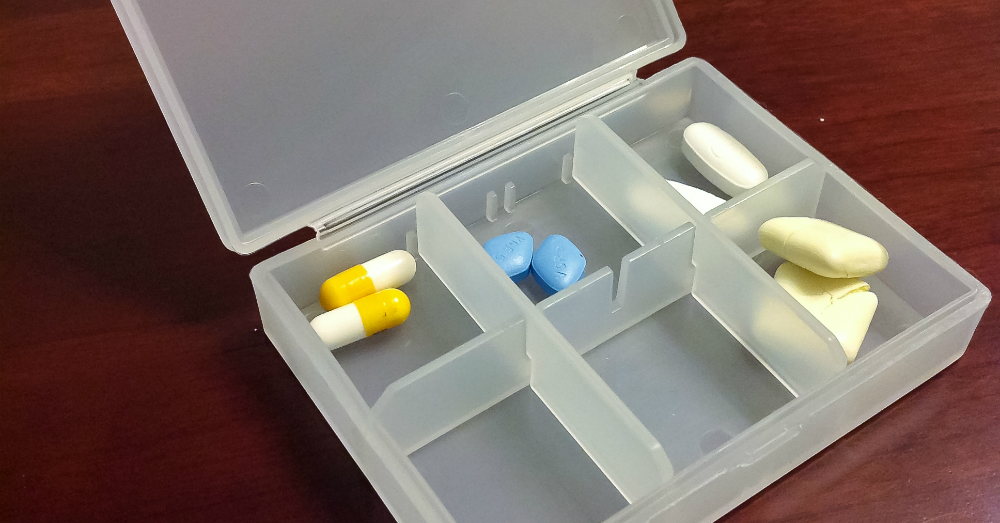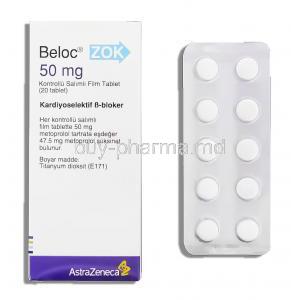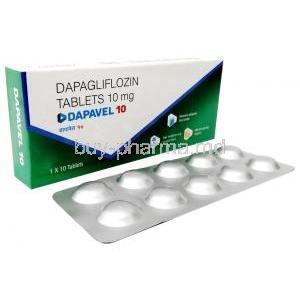Terlipressin
- I. Introduction
- II. Composition of Terlipressin
- III. How Terlipressin Works
- IV. Approved Uses of Terlipressin
- V. Off-label Uses of Terlipressin
- VI. Dosage and Administration
- VII. Side Effects of Terlipressin
- VIII. Important Precautions and Contraindications
- IX. Warnings and Careful Administration
- X. Special Populations: Usage Guidelines
- XI. Drug Interactions
- XII. Overdosage and Management
- XIII. Storage and Handling Precautions
- XIV. Conclusion
I. Introduction
Brief Overview of Terlipressin
Terlipressin, a version of vasopressin, is widely used for its vasoactive effects. It plays a role in critical care pharmacotherapy.
Importance in Medical Treatments
This drug has received praise for its effective results, especially in treating variceal bleeding and hepatorenal syndrome. It also plays a role in addressing severe circulatory conditions highlighting its essential importance in medical treatments.
Objective of the Article
The primary purpose of this article is to offer a knowledgeable understanding of Terlipressin. It seeks to clarify the components of the drug how it works, its approved and nonapproved uses, recommended doses, potential side effects, and situations where it should not be used.
II. Composition of Terlipressin
Chemical Structure and Properties
Terlipressin possesses a chemical structure which includes a cysteine bridge and a glycyl residue. Its vasoactive properties are ascribed to its molecular conformation.
Formulations Available
- Lyophilized Powder
- Injectable Solutions
Key Ingredients in Pharmaceutical Preparations
Pharmaceutical preparations typically consist of sodium chloride, acid, and water for injection, with Terlipressin being the active ingredient. These additional substances are carefully chosen to maintain stability and ensure the functioning of the medication within the body.
III. How Terlipressin Works
Mechanism of Action
Terlipressin works by attaching to vasopressin receptors, the V1 receptors. This triggers the contraction of muscles resulting in the narrowing of blood vessels.
Receptors Targeted
- V1 Receptors
- V2 Receptors (to a lesser extent)
Pharmacokinetics and Pharmacodynamics
Terlipressin can move through the body with a half-life that typically lasts between 4 to 6 hours. Its effects on the circulation involve a brief but powerful tightening of blood vessels.
IV. Approved Uses of Terlipressin
Variceal Bleeding: Clinical Efficacy and Guidelines
Terlipressin is a synthetic analog of vasopressin, which acts as a vasoconstrictor. It treats bleeding caused by esophageal varices and hepatorenal syndrome (HRS) 12. Terlipressin has been shown to be effective in reducing bleeding from esophageal varices and is considered a first-line option for treating HRS-AKI 3. The effectiveness of terlipressin in treating HRS has been evaluated in a double-blind study, which found that terlipressin appears to be as safe as other treatments and may reduce the mortality from variceal bleeding compared to placebo 4. The US FDA has approved Terlivaz (terlipressin) injection to improve kidney function in adults with HRS with a rapid reduction in kidney function, making it the first FDA-approved medication for this condition 5.
Here are some references that you can use to learn more about terlipressin:
- Terlipressin: Uses, Interactions, Mechanism of Action - DrugBank Online
- What are current guideline recommendations for use of terlipressin in hepatorenal syndrome?
- Terlipressin for acute esophageal variceal hemorrhage
- FDA approves treatment to improve kidney function in adults with hepatorenal syndrome
Hepatorenal Syndrome: Usage and Benefits
Terlipressin is a medication used to treat hepatorenal syndrome (HRS), a condition that affects the kidneys in people with liver disease. Terlipressin is known for its effectiveness in improving kidney function in people with HRS by enhancing blood circulation and reducing abnormalities caused by this syndrome 123.
Here are some references that you can use to learn more about terlipressin and its effectiveness in treating HRS:
- Terlipressin for Type 1 Hepatorenal Syndrome | SpringerLink 1
- Norepinephrine is More Effective Than Midodrine/Octreotide … | Frontiers 2
- Terlipressin in hepatorenal syndrome: a systematic review and meta … | SpringerLink 3
Terlipressin is a medication used to treat hepatorenal syndrome (HRS), a condition that affects the kidneys in people with liver disease. Terlipressin is also being studied for its potential to treat sepsis-related hypotension, although its effectiveness is limited due to the risk of complications 123.
Here are some references that you can use to learn more about terlipressin and its effectiveness in treating sepsis-related hypotension:
- Vasopressin and terlipressin in septic shock patients | Critical Care 4
- Continuous terlipressin versus vasopressin infusion in septic shock … | Critical Care 5
- Retrospective analysis of terlipressin in bolus for the management of … | Interactive Cardiovascular and Thoracic Surgery 6
V. Off-label Uses of Terlipressin
Acute Heart Failure: Preliminary Findings
Terlipressin is a medication that is primarily used to treat hepatorenal syndrome (HRS), a condition that affects the kidneys in people with liver disease. Terlipressin is also being studied for its potential to treat sepsis-related hypotension, although its effectiveness is limited due to the risk of complications 123.
Diabetic Ketoacidosis: Theoretical Foundations and Evidence
According to a systematic review published in Critical Care, vasopressin use in vasodilatory shock is safe, associated with reduced mortality, and facilitates weaning of catecholamines 1. However, the same review did not find any concrete clinical evidence to support the potential use of Terlipressin in modulating vasodilatory shock, in diabetic ketoacidosis 1.
Postoperative Bleeding: Clinical Cases and Recommendations
According to a review published in Liver International, terlipressin is an effective drug for reversing hepatorenal syndrome (HRS) in patients with liver cirrhosis and acute-on-chronic liver failure. The review also found a documented mortality benefit with terlipressin therapy in HRS and acute variceal bleed (AVB) 1. However, due to safety concerns, the Food and Drug Administration (FDA) did not approve terlipressin until now 1.
VI. Dosage and Administration
Recommended Dosage for Various Conditions
For bleeding, the recommended dosage is 1 2 mg to be taken every 4 6 hours. In the case of the syndrome, taking 0.5 1 mg every 6 hours is advised.

Routes of Administration
Terlipressin is commonly administered through intravenous injection, allowing quick absorption and onset of its effects.
Dosage Modifications (Renal and Liver Impairments)
When someone has issues, with their kidneys or liver it's essential to adjust the dosage of medication to avoid making those conditions worse. It's crucial to talk to your healthcare provider in these situations.
VII. Side Effects of Terlipressin
Common Side Effects: An Overview
Experienced side effects may include abdominal discomfort, feelings of nausea, and a slightly slower heart rate. However, these effects are typically temporary. It can be effectively managed.
Serious Adverse Reactions: What to Watch For
If you experience severe side effects, like ischemia, it is important to seek immediate medical attention. It is always advisable to consult with healthcare professionals if you notice any symptoms.
Long-term Side Effects: Risks and Considerations
Long-term usage of Terlipressin carries risks, such as potential imbalances in electrolytes and complications related to the heart. Therefore, it is crucial to monitor its administration.
VIII. Important Precautions and Contraindications
Contraindications: When Not to Use Terlipressin
Terlipressin should not be used in patients with hypersensitivity to the medication or its ingredients. It is also contraindicated in individuals with vascular disease.
Important Precautions: Red Flags and Safety Measures
It is crucial to consider the drug's contraindications and possible side effects. It is recommended to conduct laboratory tests to ensure the treatment is effective and safe.
IX. Warnings and Careful Administration
Warnings: Regulatory Guidelines and Updates
As guidelines emphasize, it is crucial to be extremely cautious when giving Terlipressin. The U.S. Food and Drug Administration (FDA) and the European Medicines Agency (EMA) have issued directives that draw attention to the drug's tendency to cause events and arrhythmia.
Careful Administration in Specific Populations
Extra care must be taken when administering Terlipressin to individuals with existing conditions such as cardiovascular disease or renal impairments. This is necessary to prevent worsening of the condition and ensure therapeutic management.
X. Special Populations: Usage Guidelines
Administration to Elderly Patients: Dose Adjustments and Risks
Dosage adjustments are frequently necessary for patients. This group is more prone to experiencing effects from the medication, particularly electrolyte imbalances and bradycardia.
Administration to Pregnant Women and Nursing Mothers: Safety Profile
The full extent of the effects of Terlipressin has not been completely understood yet. Therefore, it is recommended to be cautious when administering this medication to women and nursing mothers.
Administration to Children: Age-Specific Guidelines
The assessment of administration is crucial because there is a lack of comprehensive clinical data available for this population. Age-specific guidelines are currently being closely examined to provide clarity and understanding.
XI. Drug Interactions
Common Drugs that Interact with Terlipressin
- Antihypertensive Agents
- Corticosteroids
- Diuretics
Potentiation or Reduction of Efficacy
Terlipressin with other vasoactive agents or antihypertensives can either enhance or reduce its effectiveness as a treatment. This requires consideration and planning from a pharmacological perspective.
Special Considerations for Polypharmacy
In situations where multiple medications are prescribed,, drug interactions can interplay. Therefore it is crucial to monitor and potentially make adjustments, to the medications as needed.
XII. Overdosage and Management
Symptoms of Overdose
Overdosing on Terlipressin mainly leads to issues, specifically a hypertensive crisis and arrhythmia. These complications require medical attention.
Emergency Management Protocols
If someone overdoses on Terlipressin, it is crucial to stop using it and begin providing symptomatic treatment. The critical part of the emergency protocol is stabilizing the person's hemodynamics.
Preventive Measures
Effective prevention of overdose relies on the calculation of dosages and thorough monitoring of patients.
XIII. Storage and Handling Precautions
Optimal Storage Conditions
Terlipressin needs to be stored in a room with controlled temperature from light and moisture in order to maintain its effectiveness as a medication.

Expiry and Shelf Life
The expiration date of the drug is significant. Using it after it expires may lead to reduced effectiveness and higher chances of effects.
Handling Precautions: Ensuring Safety and Efficacy
It is essential to use methods for handling intravenous solutions, such as taking aseptic precautions, to reduce the chances of contamination.
XIV. Conclusion
Summary of Key Points
Terlipressin holds significance in treating certain critical conditions. Although its therapeutic value is unquestionable, it is essential to use it due to the associated considerations, interactions, and potential side effects.
Final Thoughts on the Importance of Safe and Effective Use
The central point of the discussion about Terlipressin revolves around its efficient usage. As healthcare professionals, we must apply this treatment with carefulness and expertise, emphasizing the importance of doing so.











